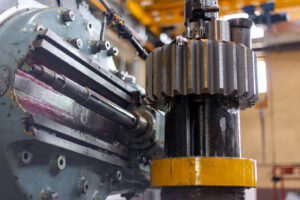Computer Numerical Control (CNC) machines have revolutionized the manufacturing industry by enabling manufacturers to produce complex parts and products with high precision and accuracy.
However, there are limitations on the size and weight of CNC machined parts due to the size of the machine.
In this guide, we’ll explore the maximum size and weight of CNC machined parts.
Machine capacity and raw material size
The maximum size of a CNC machined part is determined by the capacity of the machine and the size of the raw material. CNC machines come in different sizes and capacities, ranging from small desktop machines to large industrial machines.
The size of the raw materials that can be used by CNC machines depends on the size of the worktable of the machine, which is the maximum working area that the machine can accommodate. For example, a small benchtop CNC machine may have a table that measures 12 inches by 12 inches, while a large industrial machine may have a table that measures 60 inches by 120 inches.
Therefore, the maximum size of a CNC machined part depends on the table size of the machine and the size of the raw material that will fit in that work area.
The weight of a CNC machined part depends on the density of the material used and the size of the part. CNC machines can produce parts in various materials, including metals, plastics, and composites. The density of the material used will determine the weight of the part.
For instance, parts machined from aluminum weigh less than those machined from steel, even though they are the same size. To produce large and heavy parts, manufacturers use large industrial CNC machine tools with higher load-bearing capacity.
These machines can accommodate heavier raw materials, such as large pieces of steel or aluminum, and can handle cutting and shaping of these materials.
To produce large and heavy parts, manufacturers can use a variety of strategies.
One strategy is to divide the part into smaller sections and machine each section separately. These sections are then assembled using welding, bolting, or other joining methods to create the final part. Another strategy is to use multiple CNC machines to machine different parts of the part simultaneously. This method is often used when producing large and complex parts that require high accuracy and precision. Finally, manufacturers can use advanced CNC machining software to optimize machining processes to reduce material waste and minimize final part weight. These software programs analyze the geometry of the part and suggest the best machining method to achieve the desired result.
In conclusion
the maximum size and weight of a CNC machined part depend on the capacity of the machine and the size of the raw material. Manufacturers can use a variety of strategies to produce large and heavy parts, including dividing parts into smaller sections, using multiple CNC machines, and using advanced machining software. By employing these strategies, manufacturers can produce complex and heavy parts with high precision and accuracy, making CNC machines a valuable tool for the manufacturing industry.




